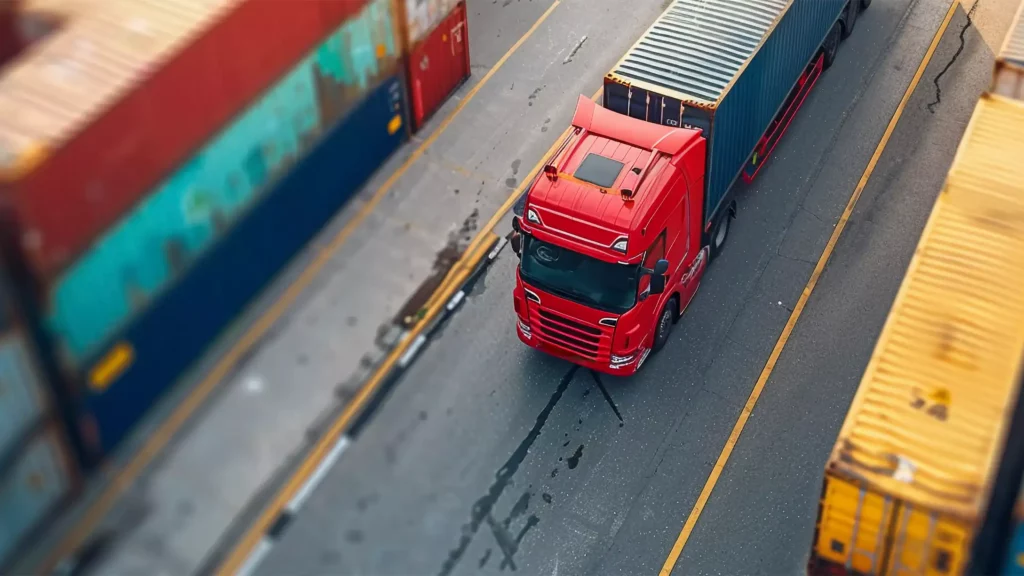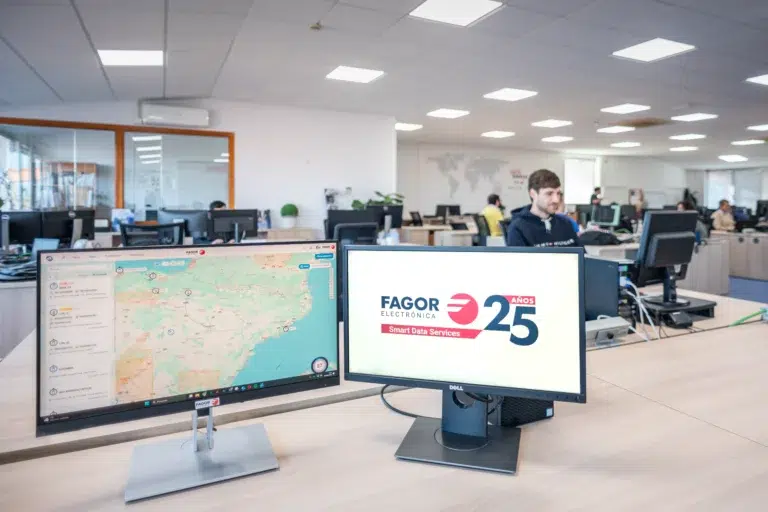Fleet management is essential in the freight transport sector as it optimises efficiency, reduces operating costs and improves safety. The following are the key benefits of implementing fleet management in freight operations.
- 1. Improving all processes, gaining time and efficiency
Fleet management automates and optimises various operational processes, reducing waiting times and increasing efficiency in the delivery of goods. This translates into more agile and profitable operations.
- 2. History of all fleet activity
Having a complete historical record of vehicle activity makes it easy to view and analyse data. With just a few clicks, past activities can be reviewed to evaluate performance and make informed decisions.
- 3. Locate all assets to improve safety and security
Real-time geolocation enables tracking of vehicles and goods, improving security and reducing the risk of theft or loss of assets. It also enables rapid response in unforeseen situations.
- 4. Dashboards for better data visualisation
The use of dashboards with key performance indicators (KPI’s) provides a clear visualisation of the most important data, facilitating decision making and efficient fleet management.
- 5. Remote downloading and centralised storage of tachograph and driver card files.
Remote downloading and centralised storage of tachograph and driver card files allows exhaustive control of driving and rest times, facilitating compliance with labour regulations.
- 6. Drivers’ driving and rest times
Control of driving and rest times helps ensure that drivers comply with regulations, avoiding fatigue and improving safety in operations.
- 7. File interpretation and infringement analysis
Advanced systems allow tachograph data to be interpreted and infringement analysis to be performed, helping to detect risky behaviour and take corrective action to improve performance.
- 8. Communication with drivers
Smooth, real-time communication with drivers improves coordination and allows them to receive updates on routes, arrival times and other instructions relevant to the operation.
- 9. Job allocation
The management system facilitates the efficient allocation of jobs and routes, optimising fleet utilisation and ensuring that goods reach their destination in a timely manner.
- 10. Driver identification and driver evaluation
Tracking drivers and their performance allows you to identify areas for improvement and evaluate their driving efficiency. This contributes to a safer and more profitable fleet.
- 11. Fuel consumption and refuelling monitoring
Monitoring fuel consumption and refuelling helps to identify patterns and optimise fuel expenditure, which reduces operating costs and improves efficiency.
- 12. Control of working hours
Monitoring working hours ensures that legal limits are met and helps improve break management, ensuring that drivers are well rested and ready to operate safely.
- 13. Permanent geolocation of assets
Continuous geolocation of vehicles allows full visibility of the fleet, facilitating route management and response to any unforeseen events that may arise during transport.
- 14. Cargo traceability
Cargo traceability, including temperature and condition monitoring, ensures that goods arrive in perfect condition at their destination. Door opening alerts also contribute to cargo security.
- 15. Management of transit points, loading/unloading sites
The system makes it possible to manage and control the waypoints, as well as the loading and unloading locations, optimising routes and improving the efficiency of logistical processes.
- 16. Sharing order/trip information in real time with users/customers
The ability to share real-time order and trip information with customers improves transparency and communication, increasing customer satisfaction and ensuring they receive accurate updates on the status of their shipments.
- 17. Route optimisation (without traffic incidents)
Real-time route optimisation, taking into account traffic conditions, reduces delivery times, saves fuel and minimises environmental impact, ensuring a faster and more efficient service.
- 18. Vehicle, driver and freight safety
The use of advanced security systems, such as surveillance cameras and sensors, ensures the protection of vehicles, drivers and goods, minimising risks and improving safety at all stages of transport.
- 19. Vehicle theft management
Geolocation and remote immobilisation functions enable effective vehicle theft management. In the event of theft, the vehicle can be quickly traced and recovered, reducing losses.
- 20. Vehicle immobilisation
Remote immobilisation of vehicles, in case of theft or unauthorised use, provides an additional layer of security, ensuring that vehicles cannot be used without proper permission.
Conclusion
Fleet management in freight transport not only optimises the operation, but also improves safety, reduces costs and increases efficiency. Real-time visibility, cargo traceability and control of vehicles and drivers enable companies to offer a safer, faster and more reliable service, meeting customer expectations and maximising return on investment.



